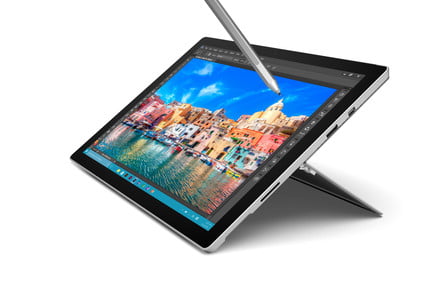Microsoft Image Gallery/Microsoft
Later versions of the Surface Pen could feature an increased accuracy in the doodles and scribbles they produce. According to Windows Latest, Microsoft has filed a patent application that proposes the use of an “active stylus motion vector” to improve the accuracy of its flagship stylus.
The patent application was filed in May 2017 and was published on February 12, 2019. In the application, Microsoft described the usual performance “trade-off” that occurs between accuracy and speed:
“A touch sensor may increase stylus location accuracy by spending more time in a touch frame on sensing stylus location. However, increased scanning durations can reduce update frequency and introduce latency in interactions between the stylus and the touch sensor. This may degrade the user experience by causing apparent delays between stylus inputs and resultant outputs — e.g., display of graphical content on a display device operatively coupled to the touch sensor. On the other hand, while desirable from a speed standpoint, reduced scan duration can diminish location accuracy.”
In essence, if the technology company tried to improve the accuracy of the Surface Pen by giving the touch sensor “more time in a touch frame” to sense the stylus’ location (called scan duration), it might also sacrifice the overall speed of the stylus, resulting in a noticeable lag between the user’s doodled input and when the doodle actually appears on the screen. And if Microsoft chose to decrease the scan duration to avoid that lag, the speed might increase, but the accuracy would decrease.
To address the above trade-off dilemma, the patent application went on to propose the use of an active stylus motion vector. Microsoft explained that this new method would allow the touch sensor to determine a motion vector for the stylus, enabling it to predict the “future location of the stylus.”
And so, since the motion vector would allow the touch sensor to just focus on the predicted movements of the stylus, the touch sensor can still accurately sense Surface Pen’s location without increasing its scan duration time. Basically, Microsoft’s proposed active stylus motion vector method should enhance its stylus’ accuracy without slowing its speed.
While the patent application’s proposed use of the active stylus motion vector isn’t guaranteed for future versions of the Surface Pen, it’s still good to see Microsoft’s research headed in what looks like the right direction for its Surface line of products.

